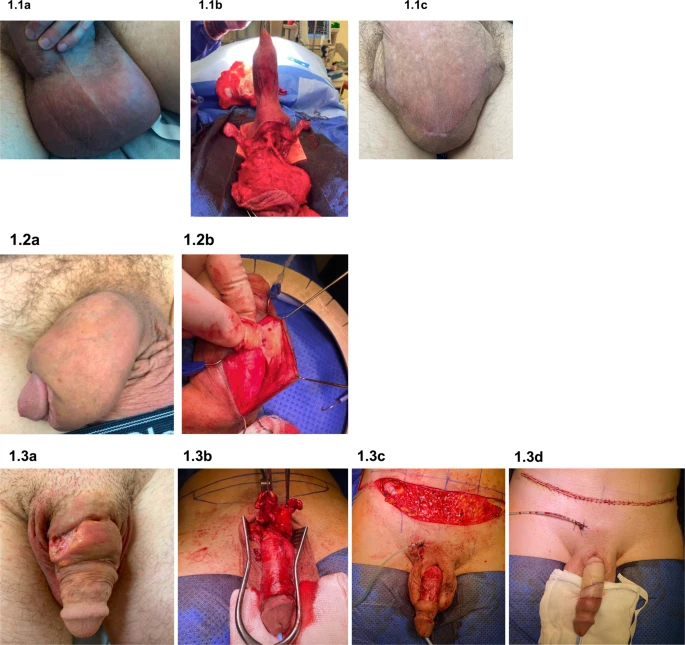There’s a common misunderstanding in the penile girth enhancement market that permanent is better.
To men seeking penis enlargement, this makes sense in theory: If you’re undergoing a procedure, you want it to be as long-lasting as possible. But there is more to consider when weighing the choice between permanent vs. non-permanent penile girth enhancement.
The Difference Between Permanent and Non-Permanent Girth Enhancement
When considering a penis girth enlargement, there are critical distinctions between permanent and non-permanent techniques.
Permanent enhancements involve materials like silicone sleeves, synthetic fillers (e.g., PLA and PCL), or implants that remain in the body indefinitely.
While these may sound appealing for their longevity, they can often lead to severe complications, including deformities, infections, or even the need for surgical removal. On the other hand, non-permanent enhancements, like the UroFill® technique, utilize hyaluronic acid (HA), a naturally occurring substance in the body. HA-based fillers are designed to integrate seamlessly, offering safe and effective results while allowing for gradual reabsorption over time. This approach minimizes risks and provides the flexibility to adjust or enhance results if desired, ensuring a safer and more satisfying experience for patients.
Why Permanent Techniques Are Not the Right Choice
In reality, “permanent” techniques for girth enhancement using synthetic materials frequently cause complications, as well as psychological and physical damage that can last longer than the techniques themselves.
Here are a few hard facts about “permanent” girth enhancement techniques:
- They are permanent because they do not belong in your body.
Silicone sleeves and synthetic fillers such as silicone, PLA, and PCL remain in the body for extended periods because, much like metals or industrial chemicals, they are foreign substances. It is well-documented that silicone can trigger severe hypersensitivity reactions, which may occur anywhere from 1 to 15 years after the initial injection. The long-term unpredictability of permanent fillers inevitably affects all patients, making it crucial to ask the right questions before any procedure—particularly about the substances being injected—to ensure both safety and satisfaction.
This is why the UroFill® technique uses hyaluronic acid, a naturally-occurring substance in humans and animals alike. While this can be gradually reabsorbed into the body, the process is slow (90% retention after two years, if not significantly more) if performed by a qualified surgeon. - They can cause serious complications and dissatisfaction, including amputation of the penis.
A recent report from the International Journal of Impotence Research studying the dangers of the use of synthetic or foreign material into the penis speaks for itself:
“Permanent fillers for penile augmentation pose significant risks, with 77.9% of patients experiencing severe complications such as pain, swelling, and penile deformity. A systematic review of 918 cases revealed that paraffin (47.7%) and silicone (15.8%) were the most commonly injected substances. Alarmingly, 78.8% of patients required surgical intervention, including excision, grafts, and in some cases, even penile amputation.”
These statistics highlight the unpredictable and often devastating consequences of permanent fillers, emphasizing the importance of seeking safe and medically-approved alternatives.
Content Not For Children – Click to unblur:

- They can change the appearance and function of the penis for the worse.
A recent expose in the New Yorker by journalist Ava Kaufman described a litany of complaints from men who had undergone silicone implant procedures:
“It was tricky to bend over to tie the laces of winter boots, tricky to slip on a condom, tricky to sleep in a comfortable position, tricky to stretch, tricky to spoon… Others said they experienced stabbing pains in the shower or during sex. Seroma, or excess fluid, was not uncommon… Some implants got infected or detached. Others buckled at the corners. Occasionally these protrusions broke through the skin, forming holes that would fester.”
The desire for a larger penis has been recorded throughout history, with often bizarre and risky techniques. While it’s only normal to want enhancement, either for pleasing partners or self-confidence, people interested in undergoing it should do research about their options, the complications, and the providers.
At UroFill®, we’re dedicated to helping improve men’s lives through clinically-proven, safe, and effective treatments. That’s why clinic founder and urologist Dr. Paul Perito developed the technique after years of research and development–girth enhancement can be performed safely if using hyaluronic acid administered by a medical professional. The risks of other techniques are high and potentially catastrophic.
The Difference is in the Details
Penile girth augmentation itself isn’t the issue—choosing the right procedure and material is what truly makes the difference. While the allure of “permanent” solutions might seem appealing at first, the reality is that these techniques often lead to serious complications and lifelong regret.
The UroFill® technique stands alone as the natural choice, offering safe, effective, and adjustable results through the use of hyaluronic acid, a substance your body already knows and accepts.
The UroFill® procedure, performed by highly trained, licensed and skilled urologists, provides the enhancement you desire without compromising your health or future. Choose wisely—because when it comes to your body, safety and satisfaction should always come first.To find out more, check out our 2025 Penile Girth Enhancement Buyer’s Guide, which describes the different options, techniques, and answers the most common questions we hear from patients.





